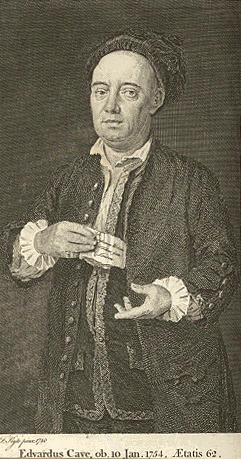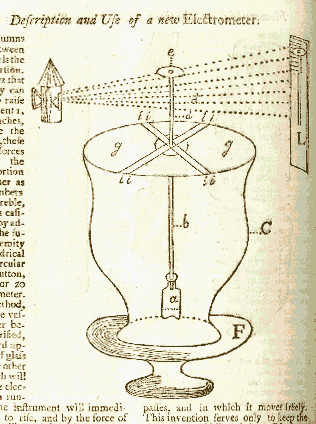The Gentleman's Magazine
Today, let's invent the magazine. The University of Houston's College of Engineering presents this series about the machines that make our civilization run, and the people whose ingenuity created them.
In 1937 my father brought us the first issue of Life magazine. It was a big event. That wonderful new collection of pictures and stories had the power to touch both child and adult.
The format -- that sumptuous array of news, features, pictures, and stories -- is now 260 years old. The Arabic word makhazin means storehouses. Edward Cave invented the medium in 1731, and he called it The Gentleman's Magazine.
Cave was a commoner whose education had been cut short. He was brash and rough-hewn. He lacked social grace. Cave took up printing, and he rode the crest of a new wave. Before the magazine, specialized news, political, and literary journals came into being. He was in the middle of all that.
Cave soon ran afoul of English law for publishing news of Parliament actions. That was strictly forbidden. He narrowly escaped prison, and that's where our story begins.
Cave decided there might be more to journalism than contention. He hit on a new kind of journal. He would include news analysis, but he'd present both sides. He'd include pictures and poetry. He would hold up a mirror to the public's interest.
Perhaps the most important feature is one that grew as Cave shaped his new magazine. He reported more and more often -- in more and more detail -- on advances in natural philosophy.
In 1751 his press published Ben Franklin's new pamphlet, Experiments and Observations in Electricity. He also mounted a lightning rod on the print shop. It worked. So he reported that in the Gentleman's Magazine as well.
Before he died in 1754, he'd published the first description of an electric telegraph system. He'd published an article on submarines. It gave the American, Bushnell, the design he used against the English in 1776.
Cave was a superb organizer and a second-rate writer. Yet he drew the best writers of his age. One was Samuel Johnson. Johnson had a real liking for this coarse, imaginative man.
Today that first magazine is a window back into a rich time in history. We read obituaries of Johann Christian Bach and Robert Fulton. We read Ben Franklin on revolutionary theory -- three years before we declared our independence from England.
We emerge from this storehouse with a real sense of what it was to live in days when the whole world was being turned upside down. Once more we see the transcendence of real creativity. For the first magazine was not just old wine in a new bottle. Cave gave us a whole new means for sorting out who we are -- and what we think.
I'm John Lienhard, at the University of Houston, where we're interested in the way inventive minds work.
(Theme music)
Carlson, C.L. The First Magazine: A History of the Gentleman's Magazine. Westport, CT: Greenwood Press, Pubs., 1938.
Nichols, J., The Rise and Progress of the Gentleman's Magazine. London: John Nichols and Son, 1821. (reprinted in Literary London, [Stephen Parks, ed.] New York: Garland Pub. co., 1974.)
Nangle, B., The Gentleman's Magazine: Biographical and Obituary Notices. 1781-1819, New York: Garland Pub. Co., 1980.
Kuist, J.M., The Nichols File of The Gentleman's Magazine. Madison: The University of Wisconsin Press, 1982.
Cave's advertisement for the first edition gives the magazine's full title, and it clearly states his intentions:
The Gentleman's Magazine; or Trader's Monthly Intelligencer: Being a Collection of all Matters of Information and Amusement: Compriz'd under the following Heads, viz.
Publick Affairs, Foreign and Domestick, Births, Marriages, and Deaths of Eminent Persons, Preferments, Ecclesiastical and Civil. Prices of Goods, Grain and Stocks. Bankrupts declar'd and Books Publish'd. Pieces of Humour and Poetry. Disputes in Politicks and Learning. Remarkable Advertisements and Occurrences. Lists of the Civil and Military Establishment. And whatever is worth quoting from the Numerous Papers of News and Entertainment, British and Foreign; or shall be Communicated proper for Publication. With instructions in gardening, and the Fairs for February.
By Sylvanus Urban of Aldermanbury, Gent. Prodesse et Declectare.
Printed for A. Dodd without Temple-Bar. Price 6d.

Image courtesy of Special Collections, UH Library
Edward Cave

Image courtesy of Special Collections, UH Library
An 18th century experiment in electromotive forces from the Gentleman's Magazine